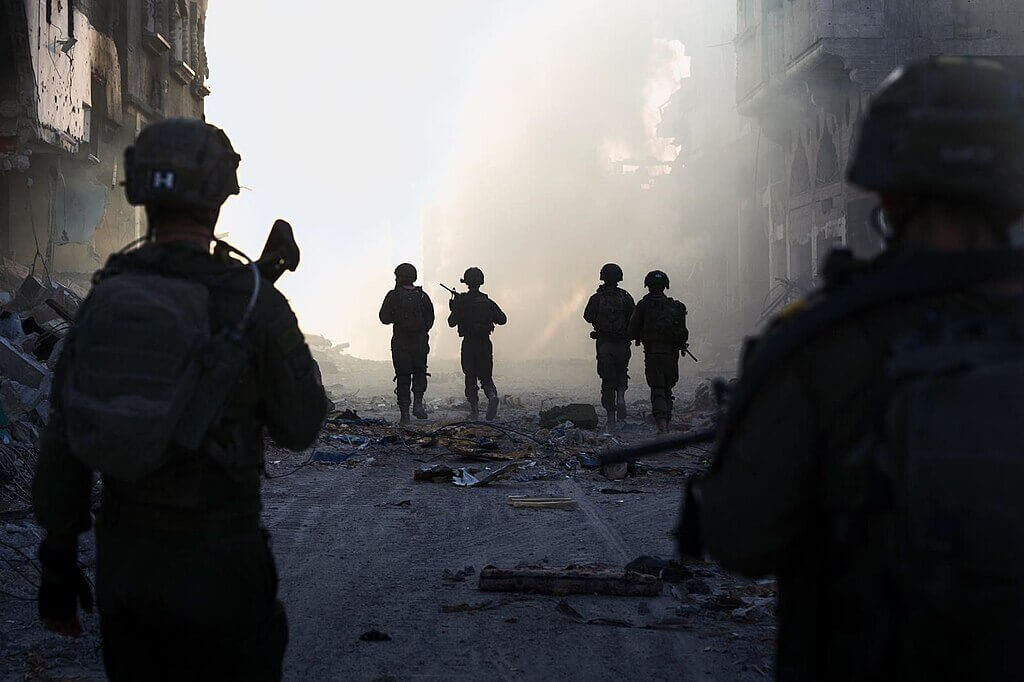Politics
Gaza’s Militia Landscape: Clans and Groups Challenge Hamas Authority

The recent escalation of violence in Gaza has unveiled a fragmented landscape of armed groups, clan networks, and militias that are increasingly challenging the authority of Hamas. According to Giorgio Cafiero, CEO of Gulf State Analytics and a noted expert on Middle Eastern conflicts, these factions contribute to the instability in a region already marked by a tenuous ceasefire that took effect on October 10, 2023. While none of these groups can rival Hamas in terms of power, their influence complicates the existing dynamics.
Mapping the ecosystem of armed factions in Gaza is a complex task. There is a lack of clarity regarding what precisely constitutes a “militia” in this context. Fluid affiliations, overlapping identities, and informal hierarchies create a murky distinction between organized armed groups, clan-based networks, and criminal syndicates. Many of these actors operate discreetly, often under the radar of both Hamas and the long-established militant group, the Palestinian Islamic Jihad (PIJ).
At least a dozen distinct armed groups exist alongside Hamas and PIJ, each differing in ideology and organization. Some of these factions have emerged recently, while others have reasserted themselves, often receiving covert support from Israeli authorities who view Palestinian fragmentation as beneficial.
Key Factions in Gaza’s Militia Landscape
One notable group is the Popular Forces, led by Yasser Abu Shabab. This anti-Hamas militia was formed in early 2025 and has been involved in military actions against Hamas, particularly during airstrikes. The Popular Forces are estimated to comprise around 1,500 fighters, with their operations strategically located near humanitarian aid corridors at the Kerem Shalom crossing.
Abu Shabab, with a criminal history predating his militia leadership, has gained notoriety for intercepting aid convoys. Despite its limited size, the Popular Forces have become a persistent irritant to Hamas. Following the recent ceasefire, Hamas has intensified its crackdown on the group, targeting its members and their resources.
Another faction, the Popular Army – Northern Forces, operates under the auspices of the Popular Forces and is led by Ashraf al-Mansi. This group has engaged in sporadic clashes with Hamas units in northern Gaza. Al-Mansi has publicly expressed gratitude toward former U.S. President Donald Trump for efforts to secure a ceasefire in Gaza.
The Counter-Terrorism Strike Force, established in August 2025 and led by Hossam al-Astal, presents another challenge to Hamas’ authority. Operating primarily in southeastern Khan Younis, the group has emerged as a local faction that portrays itself as a protector of civilians. Al-Astal has a controversial past, including alleged involvement with the Israeli intelligence service and public statements supporting collaboration with Israeli forces.
Clans and Their Influence
The Shujaiya Popular Defense Forces, led by Rami Helles, represents another dimension of Gaza’s armed landscape. This militia, composed primarily of members from the Helles family, has historical ties to Hamas dating back to the 2007 conflict. Despite their affiliation, the clan has publicly supported the broader Palestinian resistance.
The al-Majayda and Doghmosh clans are among the most powerful in Gaza. The al-Majayda clan has been involved in armed confrontations with Hamas, particularly following a raid by Hamas security forces aimed at arresting alleged collaborators. The clan’s leader publicly supported Hamas’ security efforts, illustrating the complex loyalties within Palestinian society.
The Doghmosh clan has a history of armed resistance and maintains diverse political affiliations, including ties to both Hamas and Fatah. They are known for their longstanding tensions with Hamas, which have escalated in recent months.
The activities of these militias and clans not only threaten the authority of Hamas but also complicate international efforts to stabilize Gaza. The current situation undermines the prospects for creating a cohesive Palestinian front that can work towards a unified state. Israeli support for these factions reflects a long-standing strategy aimed at deepening divisions among Palestinians, complicating their ability to present a united opposition to Israeli policies.
As Gaza navigates this intricate web of power dynamics, the potential for further conflict remains high. The resilience and adaptability of these armed groups may pose significant challenges to both Hamas and any international efforts aimed at reconstruction and stabilization in the region.
-

 Business1 week ago
Business1 week agoIconic Sand Dollar Social Club Listed for $3 Million in Folly Beach
-

 Politics2 weeks ago
Politics2 weeks agoAfghan Refugee Detained by ICE After Asylum Hearing in New York
-

 Health2 weeks ago
Health2 weeks agoPeptilogics Secures $78 Million to Combat Prosthetic Joint Infections
-

 Science1 week ago
Science1 week agoResearchers Achieve Fastest Genome Sequencing in Under Four Hours
-

 Lifestyle2 weeks ago
Lifestyle2 weeks agoJump for Good: San Clemente Pier Fundraiser Allows Legal Leaps
-

 Health2 weeks ago
Health2 weeks agoResearcher Uncovers Zika Virus Pathway to Placenta Using Nanotubes
-

 World2 weeks ago
World2 weeks agoUS Passport Ranks Drop Out of Top 10 for First Time Ever
-

 Business2 weeks ago
Business2 weeks agoSan Jose High-Rise Faces Foreclosure Over $182.5 Million Loan
-

 Entertainment2 weeks ago
Entertainment2 weeks agoJennifer Lopez Addresses A-Rod Split in Candid Interview
-

 Top Stories1 week ago
Top Stories1 week agoChicago Symphony Orchestra Dazzles with Berlioz Under Mäkelä
-

 World2 weeks ago
World2 weeks agoRegional Pilots’ Salaries Surge to Six Figures in 2025
-

 Science2 weeks ago
Science2 weeks agoMars Observed: Detailed Imaging Reveals Dust Avalanche Dynamics









